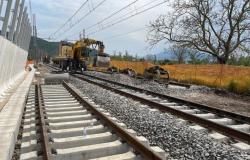Rome wasn’t made in a day. But in a few years, if a “plan” for the capital is not developed, it risks being destroyed. The decentralization of functions and resources from the center to the periphery, which will occur with the law on differentiated autonomy, risks slowly, but inexorably, emptying it. Let’s take the ministries. Until 10 years ago they had 161 thousand employees. The latest Treasury account recorded just over 122 thousand. In two decades, 40 thousand employees have been lost along the way, most of them employed in the capital’s offices. Sacrificed on the altar of the recovery of public finances. Numbers that have had an impact on the economic and social fabric. A recent study by the Bank of Italy has shown that over the course of almost twenty years, the trend in the capital’s added value per capita has been worse than that of other main Italian and European cities, a consequence of unsatisfactory product dynamics for busy.
WITHDRAWAL
Faced with the retreat of the public sector, large businesses and investments, there has been rapid growth in employment in low-knowledge-intensive services. But, as mentioned, it is above all the public sector that has had an impact. The reduction in government employees, the Bank of Italy study suggests, may have had an impact on the performance of public services and the quality of life perceived by residents; the decline in investments, more marked than what occurred in other areas, instead reduced the accumulation of public capital, hindering product growth.
The retreat of the sector may also have slowed down both the influx of graduates and the growth of qualified employment and private capital, both potentially discouraged by the worsening of the quality of services as well as by the drop in demand in the public sector. Despite these dynamics, the Bank of Italy explained, Rome’s economy still presents a series of strengths: the still central role of knowledge-intensive services and the high degree of internationalization of those for companies, the significant weight of workers with higher education, a high birth rate of businesses and a notable weight of public research. These strengths must be maintained and consolidated, preventing administrative decentralization from further eroding the position of the Capital. Which could happen when autonomy is implemented through agreements. The mechanism behind the project makes it inevitable.
The moment the Regions are recognized to “retain” tax revenue and hire the staff necessary to manage the transferred functions, almost automatically those who managed those resources at the Center will need fewer people to do so. The decision-making centers will move to the capitals of the Regions which will ask for all or some of the twenty-three matters that the State will have to renounce in the name of autonomy. The financial surplus that the autonomist Regions will be able to retain thanks to the greater fiscal capacity of their citizens will allow not only to improve services, but also to increase incentives for the companies themselves. It is highly probable that administrative decentralization will be followed by economic decentralization, or at least a dispute will ignite between territories for the attraction of businesses and human capital. In other words, a flight towards “ecosystems” deemed more efficient.
THE PASSAGE
Rome risks being a little less capital. But this does not mean that this ultimately creates greater efficiency. To understand this, perhaps it is worth trying to read what happened with the Pnrr, with the National Recovery and Resilience Plan. That is, when, to lift the country out of the crisis, it was decided to invest 200 billion euros, partly non-repayable and partly borrowed. A great “industrial plan” for Italy. And what was decided to ensure we respect the commitments made with Europe? To centralize the government of this plan. To give it into the hands of Rome, understood as the administrative capital of the State. On top of everything there is a control room presided over by the Prime Minister, Giorgia Meloni. A technical mission structure has been established at Palazzo Chigi which reports to a delegated minister, Raffaele Fitto, who maintains discussions with the European Commission and monitors the implementation of the Plan in collaboration with the State General Accounting Office. Each ministry, which is entrusted with the interventions envisaged by the Pnrr, has equipped itself with a general management level structure to which the monitoring, reporting and control activities of all interventions are entrusted. The State has provided itself with substitute powers in case the objectives were at risk. The government can appoint commissioners to replace defaulters, a way to immediately remedy the delays of local administrations or public companies participating in the Plan. Rome, with the Pnrr, has exercised the leadership role that it naturally deserves. For everyone’s benefit.
© ALL RIGHTS RESERVED





